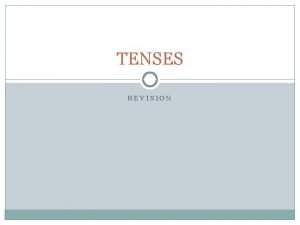Homework Christmas Holidays Human Geog REVISE Revise all
















- Slides: 16

Homework – Christmas Holidays Human Geog • REVISE: • Revise all of regeneration so far using the spec to help you (you have a printed booklet of the spec) – go through and if there’s anything you don’t understand use the hodder textbook to re-inforce understanding. • Strategies – re-writing notes and CONDENSING them. Go to Edexcel Geography GCE website and look at past exam questions and mark schemes. Dynamic learning. Mindmaps OR revision cards • I want to see EVIDENCE of your revision over the xmas holidays

Regeneration - Enquiry Question 4 • Assessing the success of regeneration 4 A. 11 Different urban stakeholders have different criteria for judging the success of urban regeneration. a. A study of the strategies used in the regeneration of an urban place (Salford Quays) and the contested nature of these decisions within local communities. (10) (A: Attitudes will include NIMBYism) b. The changes that have taken place as a consequence of national and local strategies can be judged using a range of economic, social, demographic and environmental variables in an urban area. (F: future success depends on past decisions) c. Different stakeholders (local and national governments, local businesses and residents) will assess success using contrasting criteria; their views will depend on the meaning and lived experiences of an urban place and the impact of change on both the reality and the image of that place.

Urban Key Player’s View on Regeneration By the end of today’s lesson you will have: • Re-capped what the range of measures used are to measure the success of regeneration • Explored how to measure success of urban regeneration by looking at different stakeholders • Studied Newcastle as an example of urban success (other examples can be found in the textbook)

Re-Cap: Measures of Success • 1. What are three ways in which we measure success? • 2. Name 2 qualitative and 2 quantitative ways in which we measure success • 3. Give an example of an unsuccessful urban regeneration project • 4. What was Plymouth’s ‘good health’ in the 2001 census compared with the 2011 census?

Learning Outcomes EQ 4: How successful is regeneration? Content Today’s lesson is all about the key stakeholders within urban regeneration, and how they assess success of schemes. By the end of the lesson you will be able to give examples of stakeholders and how they assess for success. Process We will do this by working predominantly as a class todaysome whole class work, some group work and some paired work. Skill: Interrogation of blog entries and other social media to understand different views of the success of regeneration projects.

Measuring Success of Urban Regeneration • As with the general economic and social measures of success studied last lesson, the measure of urban success will often be regarded differently by different stakeholders – which are based on the stakeholder’s own motives, agendas and perceptions. • It is common for urban regeneration to now be measured on a global scale, not just a regional or national scale • Different political parties have differing agendas for urban regeneration; Tories often see successful urban regeneration as ‘good value for money’, labour see social housing as a key urban success measurement. • There are large and small scale urban regeneration projects which have differing measures of success

How to Measure Success of Urban Regeneration Proximity to knowledge Good image Sustainability Economic drive is central Social benefits need to benefit incomers as well as locals • Enhanced environment • • •

What examples can you think of? Measure of Success Example Proximity to knowledge Liverpool John Moore’s regeneration Good image ‘Glasgow with style’ Sustainability Manchester’s recent economic growth Economic drive is central Liverpool one was regenerated to increase economic expenditure in the town Social benefits need to benefit incomers as well as locals Development of comonwealth stadium (now etihad) attracts visitors but also helped locals i. e. free school built for local students Enhanced environment Salford quays – docks cleaned up

A Successful Central Business District (city centers)


Different Stakeholders in Urban Regeneration

Private companies – provide funding to government Local governments get locals on side & feedback to private & regeneration companies Regeneration companies Interest groups – link as pleasing these companies increases the chance of their regeneration scheme being successful TASK: Use the Salford case study box on page 263 and your phones to complete a mind map of the different stakeholders for Salford Quays regeneration and whether they see the regeneration as successful Increasing influence on rebranding projects Government (local/regional/national) – have the final say on projects

Analysis of Public and Private Investment • The table you have been given sets out the key players, when they are needed and examples of their work for regeneration of an urban area. • You task is to think about the positives and the negatives for each of the three types of investment. • You may discuss- be ready to feedback as a class.

Public Sector Policy Led National Mixed public and private sector Local Private Sector Investment and profit led Multiple partners Single company Players MPs, Government officials, regional (e. g. London Assembly or local councils Both sets of players Company directors, shareholders, employees When? Used for any infrastructure or publicservice projects that the private sector views as being too costly or risky, or where the expected income will be lower than the costs (projects like this can be used to kick-start a depressed economy. Where the cost is high, but it can still be shared with the private sector. Where the project will lead to benefits for more than one company or partner. New investment by a single company, to expand its product range and increase its profits. What? - Infrastructure national transport (e. g. HS 2, Crossrail), water or energy projects, all based on public need. - Major national events e. g. the 2012 Olympic games. - Health services where there are clear public benefits. Housing e. g. private housing developments, as part of which the government subsidises the construction of lowercost (affordable) housing. - Technology e. g. car companies sharing research into new engine technology. - Supply chains e. g. Intel chips made for a variety of computers. Expansion of individual companies and their range of products e. g. Microsoft, Apple Benefits It provides services and infrastructure where they are needed- not where they will make profit. Often works well in the UK, e. g. the NHS. Energetic, often creative, and competitive (which can bring costs down). Costs Sometimes seen as slow, with inaccurate budgeting and delivery times. The different sectors need to understand each other. It serves the company’s interests, which may not be those of the public (e. g. the VW scandal in 2015 about the falsification of fuel consumption data for its cars).

Exam Practice • ‘Examine how different stakeholders have differing attitudes towards urban regeneration’ (8) • ‘Assess the extent to which different stakeholders have differing views towards urban regeneration’ (12) • EITHER use your 8 mark level descriptor in your lilac booklets to write the 8 marker in whole • OR use the PESEL sheet in your lilac booklet to plan an answer to the 12 mark question

Review/Homework Conflict Matrix - use page 267 to help you • Copy this conflict matrix out, and replace the ‘player A’ etc with examples of key players. i. e. include local people, the government, private investors. Player A Player B Player C Player D Player E Player F Player B Player C • Complete the conflict matrix to see who would, and who would not agree with each other in terms of regeneration strategies. Player D Player E Player F
 Christmas bells ringing through the land
Christmas bells ringing through the land Unit 1 geog. of ga/ga’s beginnings
Unit 1 geog. of ga/ga’s beginnings Free floating subdivisions
Free floating subdivisions Natural hazards definition ap human geography
Natural hazards definition ap human geography Hkdse geography 2020
Hkdse geography 2020 Geog 214
Geog 214 Geog
Geog Homework oh homework
Homework oh homework Homework oh homework i hate you you stink
Homework oh homework i hate you you stink Jack prelutsky homework oh homework
Jack prelutsky homework oh homework Homework oh homework jack prelutsky
Homework oh homework jack prelutsky Alitteration definition
Alitteration definition Example of literal language
Example of literal language Name all rays
Name all rays I didn't have time to finish my homework last night
I didn't have time to finish my homework last night Simple present tense revision
Simple present tense revision Decision letter sample
Decision letter sample































